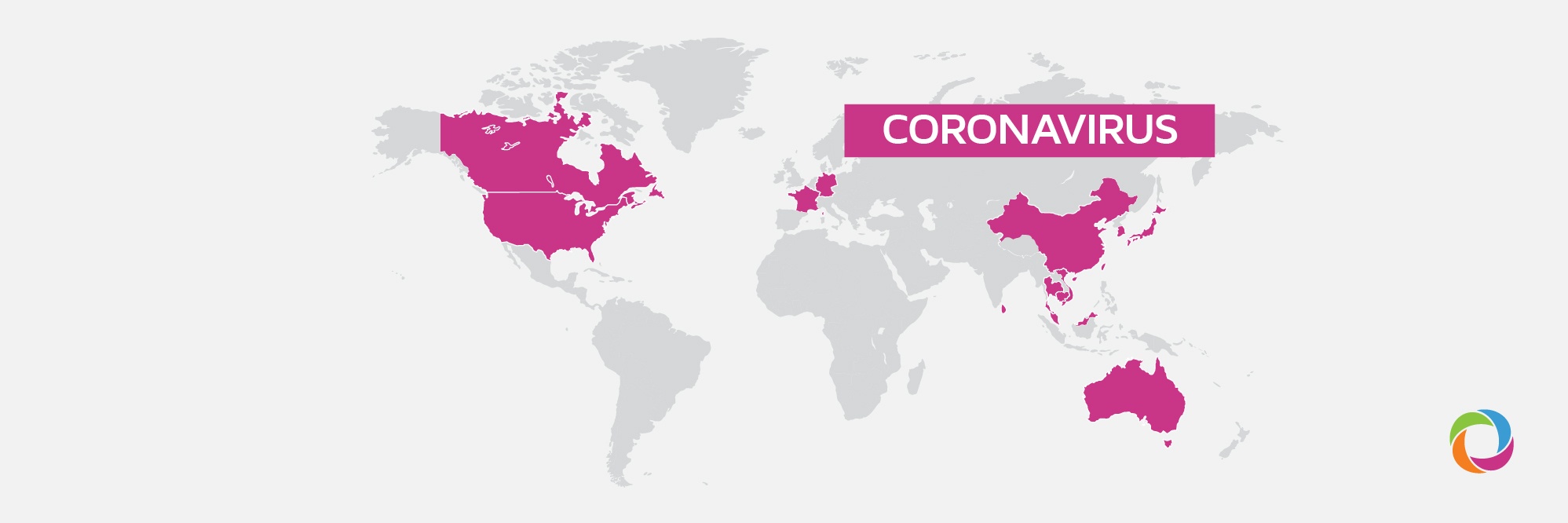(UPDATE) Since initially publishing our article, the number of global cases of the 2019-nCoV has grown significantly. DevelopmentAid has updated the statistics in order to convey accurate information to its members and readers. According to the latest reports, as of 4th February, from WHO, 20,595 cases of coronavirus have been confirmed. Official statistics also refer to 362 deaths. Of all the confirmed cases, 153 are outside China – in 23 countries across the globe. No coronavirus cases have yet been registered on the South American continent or in Africa. At the same time, according to the Ding Xiang Yuan (an online medical social community), there are almost 23,214 suspected global cases of the coronavirus, with 425 deaths in China and one fatal case having been registered outside the country, in the Philippines. The source also indicates that 658 people have completely recovered from the disease.
On the last day of 2019, the World Health Organization (WHO) was alerted to several cases of pneumonia in the city of Wuhan in Hubei Province of China. The initial lab tests showed that the virus did not match any other known virus. New viruses always raise concerns – mainly because scientists do not know how they will affect people. A week later, Chinese officials have announced the identification of the new virus – a coronavirus, with name “2019-nCoV” given to it as a temporary name. Since then, the virus has spread across the world and has taken the lives of over 100 people.
Coronaviruses are a large family of viruses that are common in many different species of animals including camels, cattle, cats and bats. Rarely, animal coronaviruses can infect people and then spread between them such as was the case with MERS (2012) and SARS (2003). The symptoms of the virus are very similar to those of a common cold – runny nose, headache, cough, sore throat, fever, a general feeling of being unwell. Blood tests are necessary in order to prove the presence of the virus in the organism.
Named by scientists as the “Wuhan seafood market pneumonia virus”, 2019-nCoV is a coronavirus, like MERS and SARs, all of which have their origins in bats. Initial reports show that, in the early stages of the outbreak (early January 2020), many of those infected in Wuhan had some link to a large seafood and live animal market – the Huanan Seafood Wholesale Market, mainly its western wing where wildlife animals are traded. This suggests that the virus initially affected an animal and subsequently spread to a person in a what a CDC has called “the species barrier jump”.
When questioned by DevelopmentAid, Tarik Jašarević, a spokesperson within WHO, admitted that the source of 2019-nCoV is still unclear. “The source of the disease remains unclear although, based on current information, an animal source seems the most likely primary source of this outbreak. Epidemiological investigations are still being conducted by the Chinese authorities to determine this, in particular at some food markets in Wuhan city”, added Jašarević.
The WHO representative also mentioned that “Animal products processed appropriately through proper cooking or pasteurization are safe for consumption but should also be handled with care to avoid cross-contamination with uncooked food”. In this regard, the organization has issued recommendations as to how to reduce the risk of transmission from animals to humans. It is not yet known if the 2019-nCoV has any impact on the health of animals and no particular event has been reported in any species.
According to the WHO, 20595 cases of coronavirus have been confirmed, as of February 4th, 2020. Official statistics also mention 362 deaths. Of all the confirmed cases, 153 are outside China – in 23 countries across the globe. No coronavirus cases have been registered yet on the South American continent and Africa. At the same time, according to the Ding Xiang Yuan (an online medical social community), there are almost 23214 suspected global cases of the coronavirus, with 425 deaths in China and a lethal case outside the country, registered in the Philippines. The source also indicates that 658 people have totally recovered from the disease.
Asked if WHO plans to offer support to the Chinese authorities in handling the outbreak, Tarik Jašarević stated that the international body is in regular contact with the Chinese authorities and “is ready to provide support as requested. WHO is in regular and direct contact with the Chinese as well as authorities in other countries since the outbreak began to better understand the epidemiological, clinical and laboratory investigations. We are working with our networks of researchers and other experts to coordinate global work on surveillance, epidemiology, modelling, diagnostics, clinical care and treatment, and other ways to identify, manage the disease and limit onward transmission”, concluded Jašarević.
Governments across the globe must improve measures in order to manage and respond to the coronavirus outbreak. While in China these measures include travel restrictions and the isolation of entire cities (such as Wuhan), in other countries these measures are more moderate. People are advised to increase their hygiene procedures and limit their communication with patients who show symptoms similar those of a common cold.
Register and subscribe to the DevelopmentAid newsletter for the latest news on the global response to 2019-nCoV.








